7 Most Common Diseases That Could Be Killing Your Trees
Reading time: 6 minutesTree diseases can do more than make your trees look unattractive; they can destabilize them and make them more likely to break or fall.
Understanding the most common tree diseases and what to do if you have concerns about your tree's health is critical for keeping your property looking great.
Keep reading to learn about 7 diseases, their signs, and what happens next.
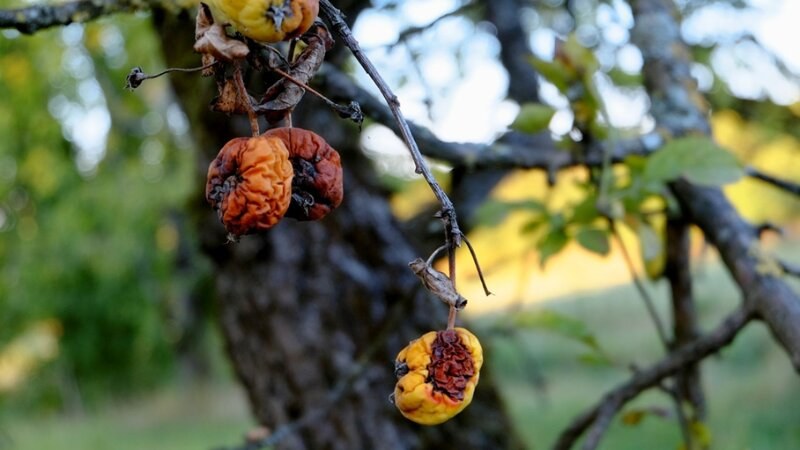
1. Dutch Elm Disease

Dutch Elm Disease (DED) is a fatal tree disease caused by an aggressive fungus that interferes with a tree's ability to transport water and nutrients from its trunk to the leaves. The Government of Alberta reports that most trees with DED die fairly quickly, usually in just a season or two.
Signs of this condition include sudden dieback, flagging (yellow leaves that stay on the tree), and dark red or brown streaks underneath the bark when you peel it back. If the infection occurs in the late summer or early fall, it can be easy to mistake dieback for normal seasonal colour changes. Usually, trees need to be tested to confirm the presence of DED.
2. Anthracnose
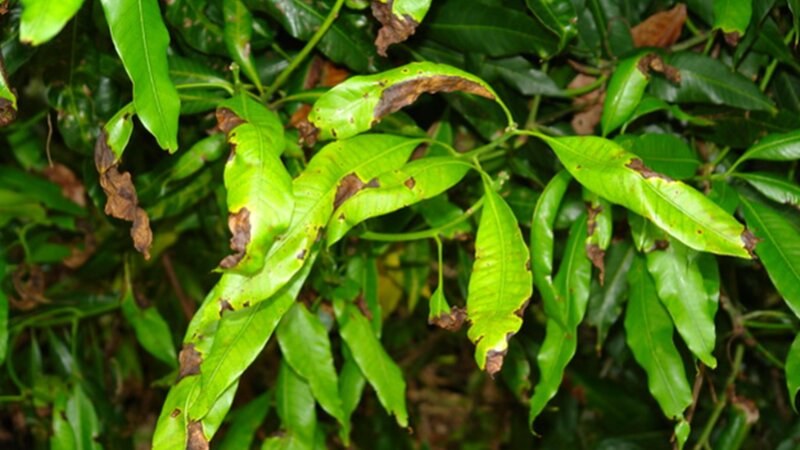
Anthracnose is a group of similar fungal diseases that infect many varieties of plants and trees throughout western Canada. Signs of anthracnose include dark spots or lesions on tree leaves, cankers or sunken areas on twigs and small branches, and large-scale dieback in severe cases.
Most commonly, this condition will defoliate a tree from the bottom to the top, meaning that the leaves closest to the trunk die first, and the crown dies last.
Tree species most susceptible to anthracnose include certain varieties of ash trees, American sycamores, and True Green Chinese elms. A few resistant varieties include Moraine and Shamel ash trees and Drake Chinese elm.
3. Oak Wilt
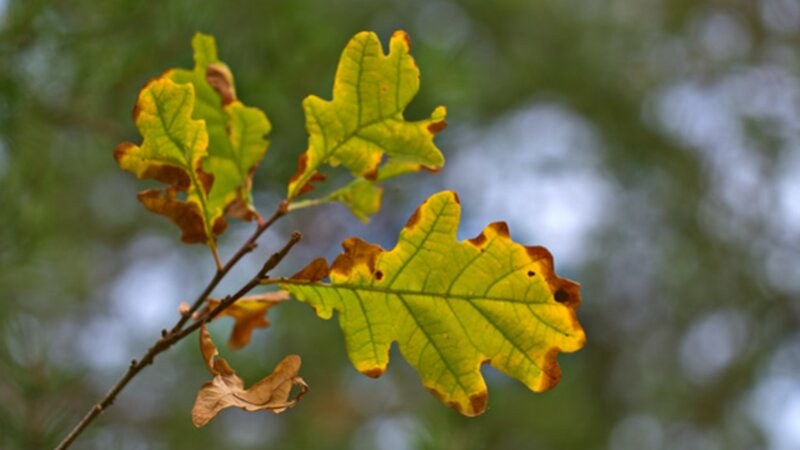
Canada’s first Oak wilt disease was discovered in June 2023 in Niagara Falls, Ontario. This disease is a vascular condition caused by a fast-spreading tree fungus that moves from tree to tree via root grafts. While some other tree species can be affected, this disease primarily affects red oak trees. Symptoms include leaf discoloration, leaf drop, and dieback.
Oak wilt is extremely aggressive and can defoliate and kill a tree from start to finish just 3 to 6 weeks after the first symptoms appear, so it's critical to act fast.
Most often, trees with this disease must be removed before they can infect other surrounding trees. Since this condition mimics many other tree diseases, it's best to have laboratory testing to confirm it.
4. Black Knot Fungus
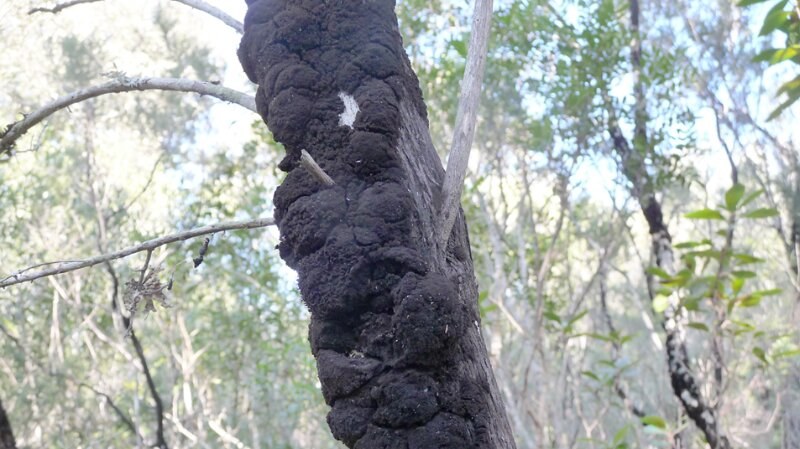
Black knot disease is a common tree condition caused by the Apiosporina morbosa fungus. It results in a large, black, deformed-looking gall in the bark at the point of pathogen entry. The gall is most visible in the fall and winter after the leaves have fallen and can appear anywhere on the trunk, branches, or twigs.
The leaves of an infected tree usually turn brown, wilt, and die unless the species is tolerant to black knots. Black knot can be inhibited with regular preventative fungicide applications; however, once the infection begins, it can't be used as a treatment.
While trees with black knot disease can survive for many years, the galls create openings in the wood for other harmful pathogens to enter, and trees often succumb to secondary infections.
5. Bronze Leaf Disease
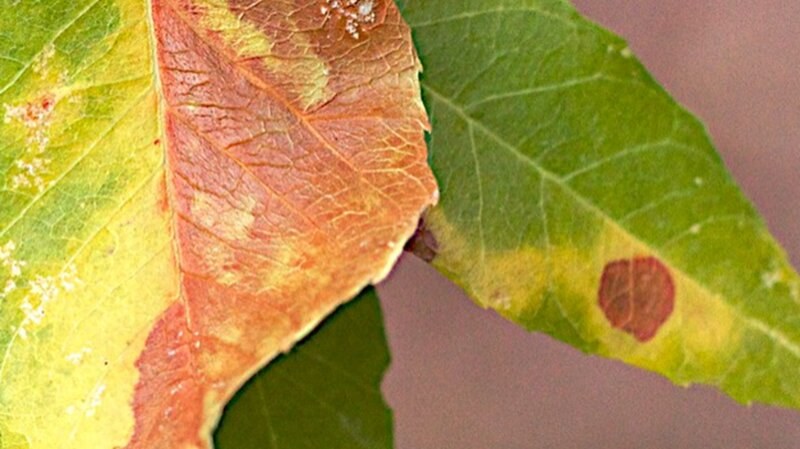
Bronze leaf disease is a common tree health condition that primarily infects aspen and poplar trees. It's caused by a fungus that can kill trees in just a few years, and no treatments are available once the disease has taken hold.
Most often, bronze leaf disease is noticeable in the summer, when leaves turn yellow or brown prematurely.
It's crucial to remove discoloured leaves right away to prolong your tree's life and prevent the fungus from spreading to nearby trees. Severely affected trees should be removed entirely, and the bark should not be composted or reused since this can further facilitate the movement of fungal spores to healthy trees.
6. White Pine Blister Rust
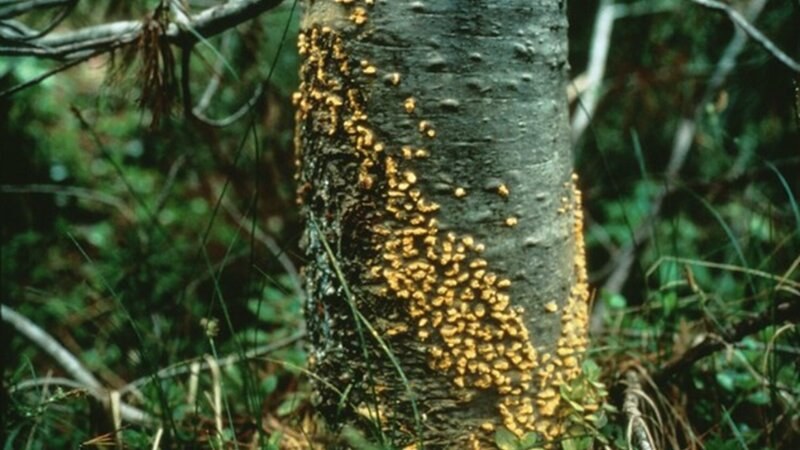
According to the Government of British Columbia, white pine blister rust originated from Siberia and is one of the most aggressive and damaging non-native tree diseases in the area. Although this condition only affects certain species of trees, like limber and whitebark pine, these are among the most important trees in the province.
Limber pine is endangered and considered the rarest conifer tree in British Columbia. Whitebark pine is also endangered and is a critical tree species for high-elevation wildlife like bears, moose, elk, and mountain goats.
This condition requires multiple hosts to spread and is characterized by bright yellow or orange spores that grow on top of cankers in the tree bark.
7. Heart Rot Disease
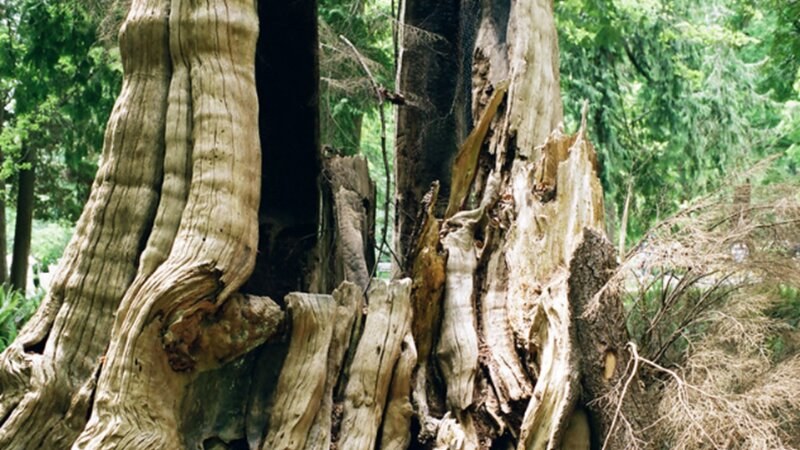
Heart rot disease is a critical fungal infection that causes a tree to decay from the inside out. Mycelium spores typically enter the tree through wounds caused by improper cutting or boring insects, infecting the tree's vascular system. Over time, the tree's interior softens, and it weakens, even though it might look normal outside.
The majority of hardwood trees can get heart rot disease, and the surest sign of this problem is the presence of mushrooms on the outer bark of the tree, which are called brackets or conks. Trees have three types of heart rot: brown rot, white rot, and soft rot.
The best way to treat heart rot is to prevent it. Once the fungi enter, it’s only a matter of time until the tree becomes structurally unsound.
How to Protect Your Trees from Disease
Protecting your trees from serious and potentially fatal diseases requires proactive effort. Here are some steps you can take:
- Prune trees properly with clean tools to remove dead branches and promote air circulation.
- To keep trees healthy and disease-resistant, provide adequate water and fertilizer at the right times.
- Apply a preventative fungicide as recommended by your tree specialist to prevent common fungal infections from taking hold.
- If you’re planting new trees, choose varieties resistant to diseases common in your area.
- Keep pests under control since they are a primary carrier of bacteria and fungi that can infect and kill trees.
- Rake leaves and grass clippings away from the base of your trees before they begin to rot.
- Consider using organic mulch around your trees to prevent pests and help your trees better regulate their moisture uptake.
- Have a tree inspection or risk assessment done regularly to spot signs of disease early.
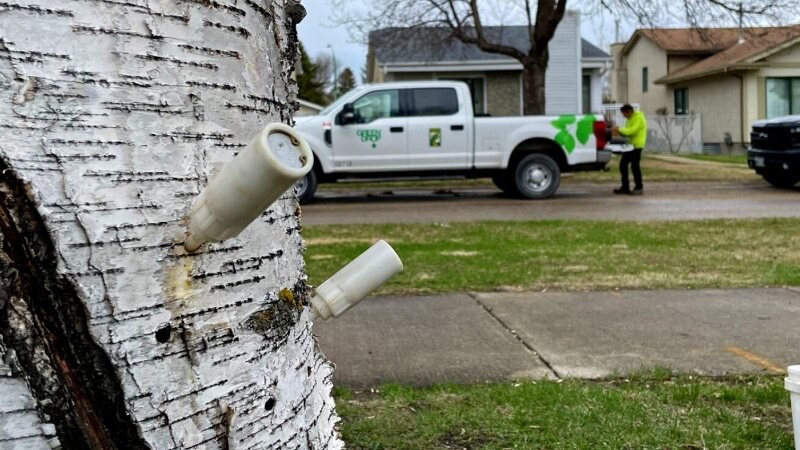
Learn More From Our ISA-Certified Arborists
Green Drop is proud to work with experienced, ISA-certified tree arborists. Our team of tree healthcare services professionals can help you prevent tree diseases like the ones above and keep your trees trimmed and healthy.
We serve Calgary, Edmonton, Red Deer, Regina, Saskatoon, and Winnipeg.
Contact us today to learn more about how to care for your trees and when to reach out to a tree removal company for help.

